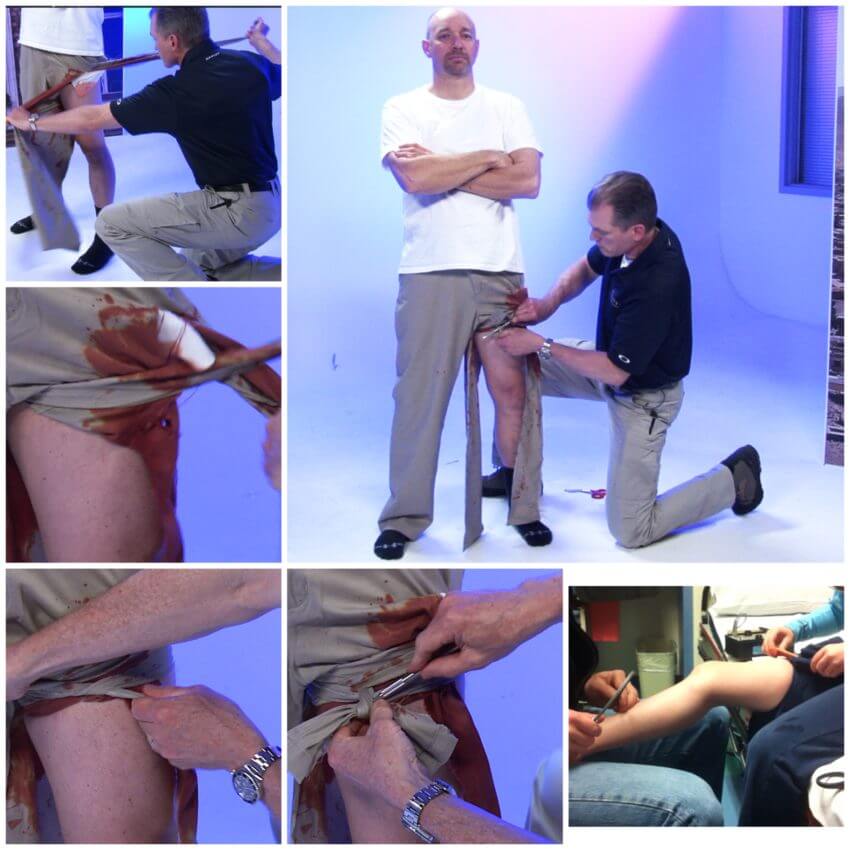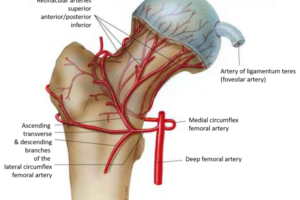
Improvised Pant-leg Tourniquets
Our first plan to manage massive extremity hemorrhage is to use a proven commercially available tourniquet. Barring that, create an improvised tourniquet using a cravat, or a strip of fabric, with a windlass for leverage.
If no other tourniqueting materials are available, a successful tourniquet can sometimes be made using the casualty’s own clothing:
- Cut up the pants 2” to either side of each side of the inseam and outseams, which will result in fabric strips about 4” wide, the length of the pant-leg.
- Wrap the fabric around the limb, crossing on the sides,
- tie a square knot, and
- tighten with a windlass. A metal pen or another sturdy object can be used to get the mechanical leverage required to make the pant leg into a tourniquet.
- Ideally, secure the windlass with another strip of fabric.
- You can cut a small hole in the casualty’s pants above the knot to hold the windlass in place without an additional tie, but it could come loose during casualty movement, so a second cravat, duct tape, or strip of fabric is preferred.
Long-sleeved shirts can also make successful tourniquets using this technique.
TRAIN NOWOnline Tactical Casualty Care Classes
This technique works best with a “certain” inseam to waist circumference ratio- if the thighs are huge and the inseam is short, there may not be sufficient fabric to wind around the limb tightly enough to fully occlude blood flow.
This technique works for children as well as adults and is proven via doppler ultrasound.
The same pantleg tourniquet is demonstrated on a 9-year old girl, and confirmed with a doppler ultrasound, the blood to the limb is occluded. Most importantly, the 9-year old tightens the tourniquet herself to a level sufficient to stop blood flow, which she would like noted was accomplished without any complaining, crying, whining, or tapping out.
For more information on tourniquets generally, see:
- Do Commercially Available Tourniquets Work on Kids?:
- Single vs. Double Routing of the Eyelet on the CAT Tourniquet
- Twist the Stick, It’s Not a Tourniquet Without a Windlass
If you’re interested in an improvised junctional pantleg pelvic binder, you might check out the article.



